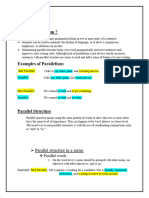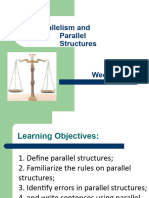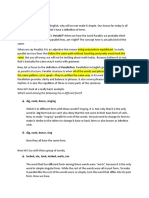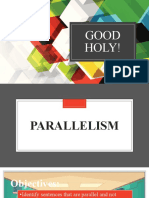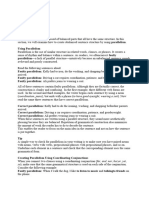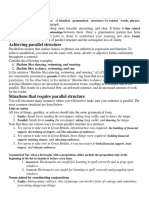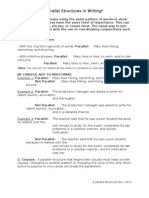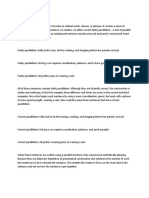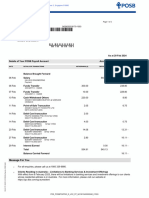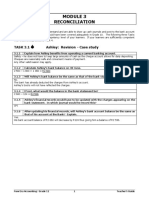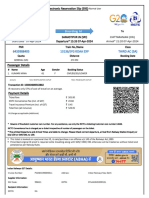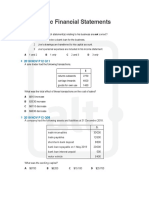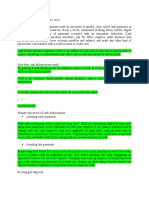0% found this document useful (0 votes)
19 views7 pagesParallelism in Writing
Parallelism is a grammatical concept that involves structuring parts of a sentence in the same way to emphasize similar ideas, enhancing clarity and readability. Examples illustrate how to maintain consistent grammatical forms in lists and phrases, such as using all nouns or gerunds. Key takeaways emphasize the importance of consistency in verb forms and structure for effective writing.
Uploaded by
YongsonCopyright
© © All Rights Reserved
We take content rights seriously. If you suspect this is your content, claim it here.
Available Formats
Download as PDF, TXT or read online on Scribd
0% found this document useful (0 votes)
19 views7 pagesParallelism in Writing
Parallelism is a grammatical concept that involves structuring parts of a sentence in the same way to emphasize similar ideas, enhancing clarity and readability. Examples illustrate how to maintain consistent grammatical forms in lists and phrases, such as using all nouns or gerunds. Key takeaways emphasize the importance of consistency in verb forms and structure for effective writing.
Uploaded by
YongsonCopyright
© © All Rights Reserved
We take content rights seriously. If you suspect this is your content, claim it here.
Available Formats
Download as PDF, TXT or read online on Scribd
/ 7
